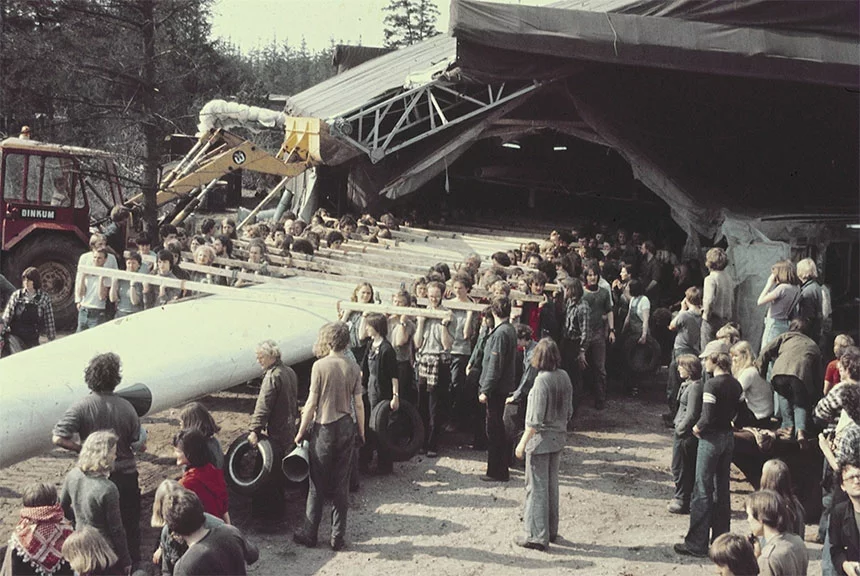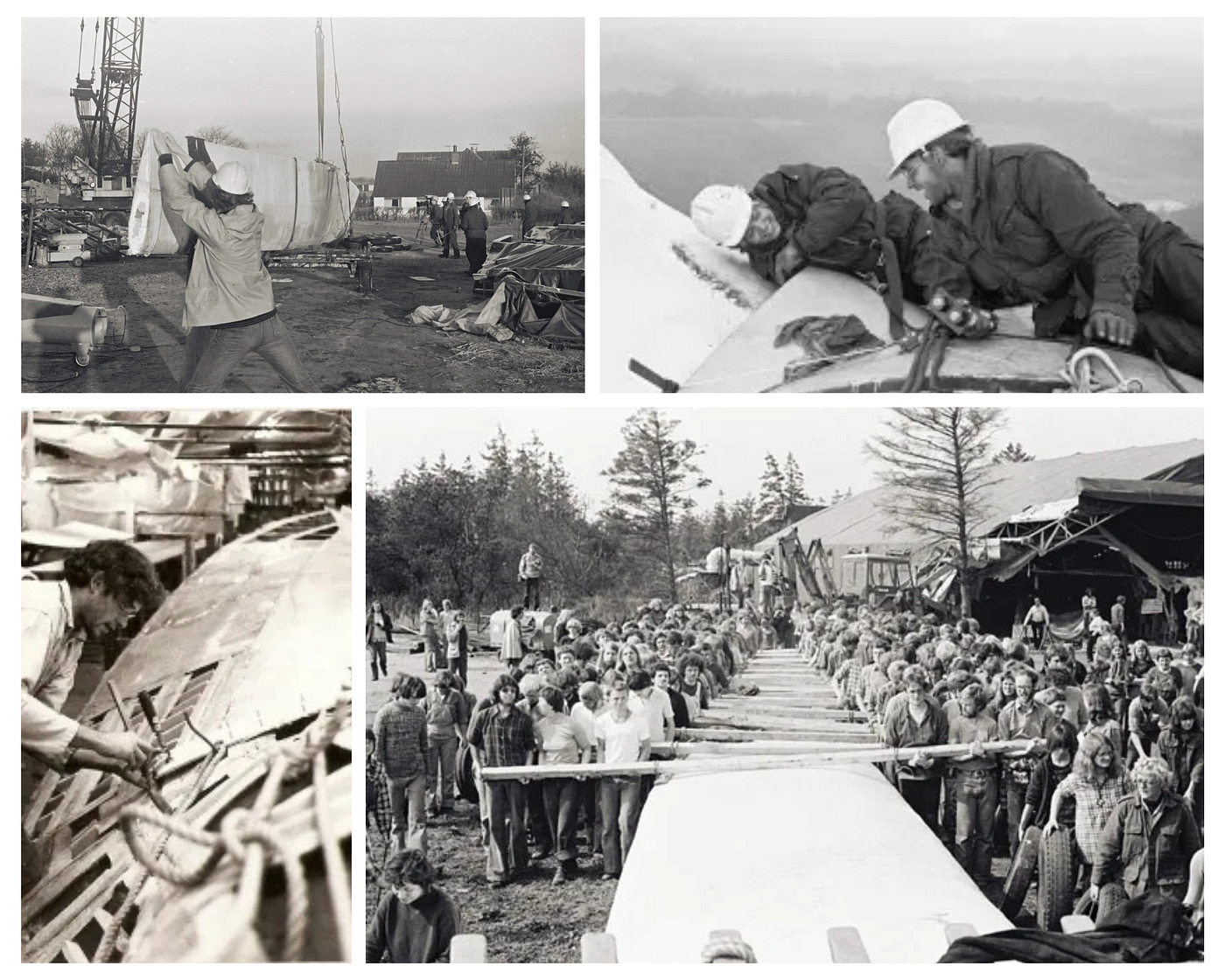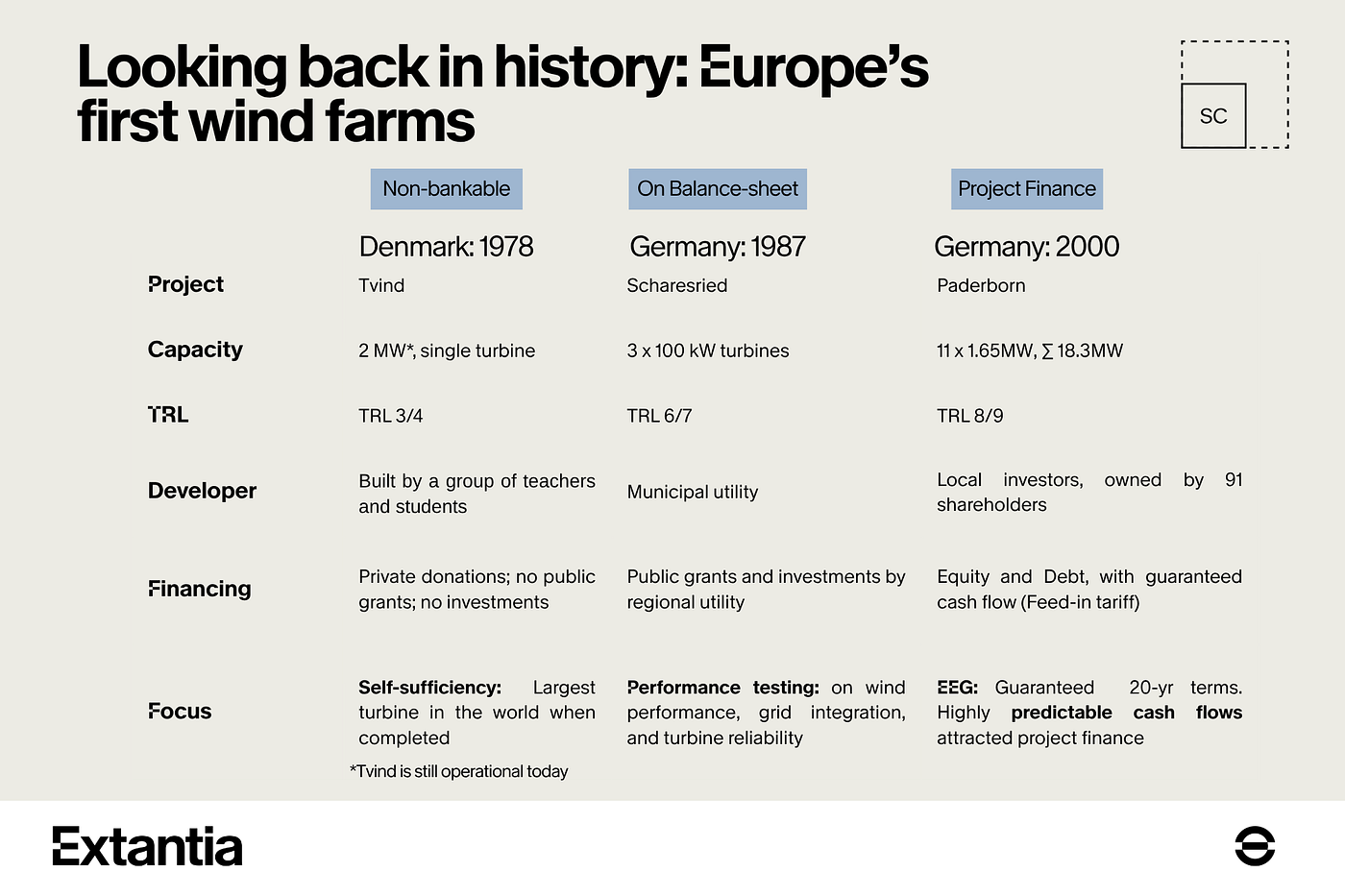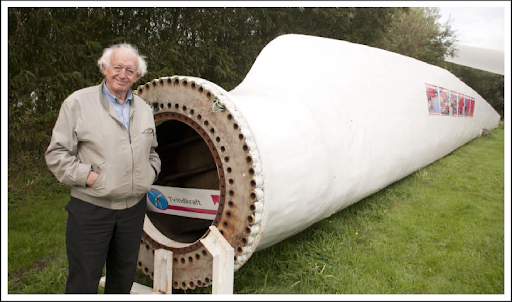
What Denmark’s Hippie Teachers Can Teach Us About Financing Climate Tech

In the 1970s, a group of Danish teachers — with no experience, no budget, and no blueprint — built the world’s largest wind turbine. It still runs today.
They didn’t wait for policy support, risk guarantees, or bank financing. They just built.
Today’s climate tech founders face a similar challenge: turning bold ideas into bankable infrastructure — without a map and often without capital. Energy storage, e-fuels, industrial heat, green cement… all critical, all expensive, and all too risky (for now) for mainstream finance.
This article explores what modern founders can learn from Denmark’s hippie engineers — how to de-risk innovation, structure capital for scale, and build real assets before the banks arrive.
A Lesson from the Wind
In the 1990s, wind power was a fringe curiosity. In the 1970s, it was almost unheard of. Yet, a small group of teachers in Denmark managed to build a working wind turbine as early as 1978. Remarkably, the turbine they built was the largest in the world at the time — and it is still functional today.
How did they do it? It wasn’t easy.
Wind power for electricity dates back to the 1880s, but for most of the 20th century, it remained a niche solution — used mainly in off-grid contexts. Fossil fuels were cheap, abundant, and politically unquestioned. There was no need to think differently.
That changed in 1973.
When the OPEC oil embargo hit, global energy systems were exposed as brittle and overdependent. Oil prices quadrupled almost overnight. Countries that had treated fossil fuel imports as an afterthought suddenly faced blackouts, rationing, and industrial paralysis.
Governments — especially in Europe and the US — scrambled to diversify. Massive, state-backed R&D programmes emerged to explore alternatives. But the most audacious act didn’t come from policymakers or utilities. It came from a group of teachers in rural Denmark.
There, on the windswept grounds of a former agricultural estate, stood three alternative schools: the Traveling Folk High School, the Necessary Teacher Training College, and the Tvind Continuation School for teenagers. These institutions served a mix of students — some were troubled youth, others were future educators preparing for work in the Global South. What united them was a philosophy: education should be hands-on, radical, and responsive to the world’s problems.
Climate change wasn’t yet the focus. But the oil crisis was impossible to ignore — and when Denmark began seriously considering nuclear power, the teachers decided to build a different kind of response. They called it Tvindkraft.
They had no funding, no resources, and no one had ever built a working wind turbine before. The windmill builders they recruited were responding to a newspaper ad and had no experience at all. The average age of the volunteers on the windmill team was 21 years old. They did hire some engineers to come up with plans and calculations, and the teachers paid for that work out of their own money.
It shouldn’t have worked, and yet, within three years, the 2MW Tvindkraft wind turbine stood tall over the Danish countryside. And half a century later, it still works.
How did they pull it off?

If you ask them, they’ll say it was all because they were thorough. They knew that they didn’t have resources or prior knowledge and that kept them humble. They didn’t leave anything to chance, but made sure that everything had been double and triple checked. And if they were completely clueless about something important? Well, they weren’t afraid to ask an expert.
These teachers founded the wind power industry. Though they didn’t know it, they were basically start-up founders. Nowadays, we would have called the Tvind wind turbine TRL 3 or TRL 4. It proved that wind turbines could work, and were viable. Tvind paved the way for the Scharesried wind power project in Germany in 1987, which had 3 wind turbines and nowadays would be considered about TRL 6/7, and that eventually led to the project at the Paderborn site in 2000 (11 turbines, each with roughly the same capacity as the Tvind turbine; TRL 8/9). See the table below for a summary of the development of the technology and the financing.

We owe a lot to those early pioneers. Nowadays, wind and solar are billion-dollar infrastructure plays, attracting global banks, sovereign funds, and conservative pension capital. What changed? Several building blocks improved over time:
- Technology matured — risk went down.
- Revenues became predictable — thanks to feed-in tariffs and power purchase agreements (PPAs).
- Standardization emerged — making it easier to evaluate and replicate projects.
- Local banks led the way — building trust in the asset class before the big institutions joined.
It took more than two decades and a lot of bruises before the likes of Deutsche Bank or HSBC felt confident putting their capital to work.
What does this mean for climate tech startups?
Today’s industrial climate startups — those tackling energy storage, industrial heat systems, e-fuel production, or decarbonized cement — are standing where wind pioneers once stood.
The opportunity is massive. But the capital? Scarce and reluctant.
Despite their enthusiasm for billion-euro wind farms, the very same banks wouldn’t touch a €20 million first-of-a-kind energy storage plant. The reasons are simple:
- No standard designs — First-of-a-kind means just that: no blueprint, no plug-and-play.
- High upfront costs, unknown risks — These are not software platforms. They’re hardware-heavy, integration-intensive bets.
- Unclear revenues — Most projects don’t have 10-year fixed-price offtakes, so the cash flows are anyone’s guess.
So who wants to own these assets? Not many. Especially not the big banks.
But here’s the truth: every major infrastructure category was once unbankable.
And just like wind, today’s asset-heavy climate innovations can become tomorrow’s financeable infrastructure — if founders innovate on their financing, not just their technology.
Here are a few ideas how to do this:
1. Turn CAPEX into a Service
Licensing your blueprint or selling units at scale might be the dream. But right now, there’s no blueprint to license — and no off-the-shelf product to sell. You’re still doing the heavy lifting.
So while you’re at it, make it easier for your customers: don’t sell them a product, offer them a solution.
Bundle the complexity. Own the asset. Deliver the outcome.
For example, founders could offer storage for grid or commercial applications, or offer heat for process industries. This strategy ensures that asset ownership remains with the startup, so that startups can decouple the customer from CAPEX and instead sell a reliable output over time, like those early wind developers.
2. Scale Your Balance Sheet, Not Your Cap Table
The ultimate dream of every climate tech founder isn’t an exit — it’s becoming bankable. That’s when scale kicks in.
Once you have a few projects running, you don’t need to scale through equity. You scale through credit.
Structure small-scale project finance in the €1–10 million range, bundled in repeatable formats. That’s where family offices, local banks, and specialised credit funds can come in.
By doing this, you can create a pipeline of de-risked, service-based deployments where investors are underwriting performance — not pioneering technology. That’s how wind took off: small, boring, profitable projects repeated at scale. No need to “own” the hardware if your returns are tied to predictable service payments.
This model works especially well for companies delivering modular units — energy storage containers, electrolyser systems, biogenic heat modules — anything that can be replicated, financed, and deployed as part of a standardised package.
3. When to call the big banks
If you’re deploying your first commercial site, don’t bother with the big banks. They may be eager to “learn” or send a team to “explore partnerships,” but they will not write checks for anything that isn’t a proven asset class. These institutions are conservative by design. They follow, they don’t lead.
Instead, focus your energy where it counts. Look into:
- Family Offices — nimble, long-term, and open to new models
- Local Banks — willing to lend when there’s strong community or regional interest (AKA job creation)
- Specialised Credit Funds — the unsung heroes of early cleantech deployment
And in Europe, don’t overlook one of the most powerful levers available: the European Investment Bank (EIB).
Through new tools like the CleantechEU Working Capital Guarantee Scheme, the EIB is stepping up with targeted instruments to unlock liquidity for scale-ups building transformative climate technologies. From venture debt to advance payment guarantees, these facilities can bridge the critical gap between vision and viability — covering up to 80% of the exposure to de-risk commercial lending.
It’s a rare case where public money moves fast — and speaks your language.
Scaling industrial climate tech has never been about scaling equity. It’s about repeatable cash flows, asset control, and smart risk-sharing. That’s how early wind projects got built. And that’s how today’s infrastructure-forging startups will move forward.
So yes, the banks will come. Eventually.
But if you’re building the future, you don’t wait for permission. You prove it, project by project — and let the big money follow.

We get it. It’s tough out there for founders. It’s never been easy to get new technologies off the ground. But if those teachers in Denmark could do it, so can you!
If you’re looking for a job with actual impact, both for your career as well as for the planet have a look at the job openings within our eco system.


